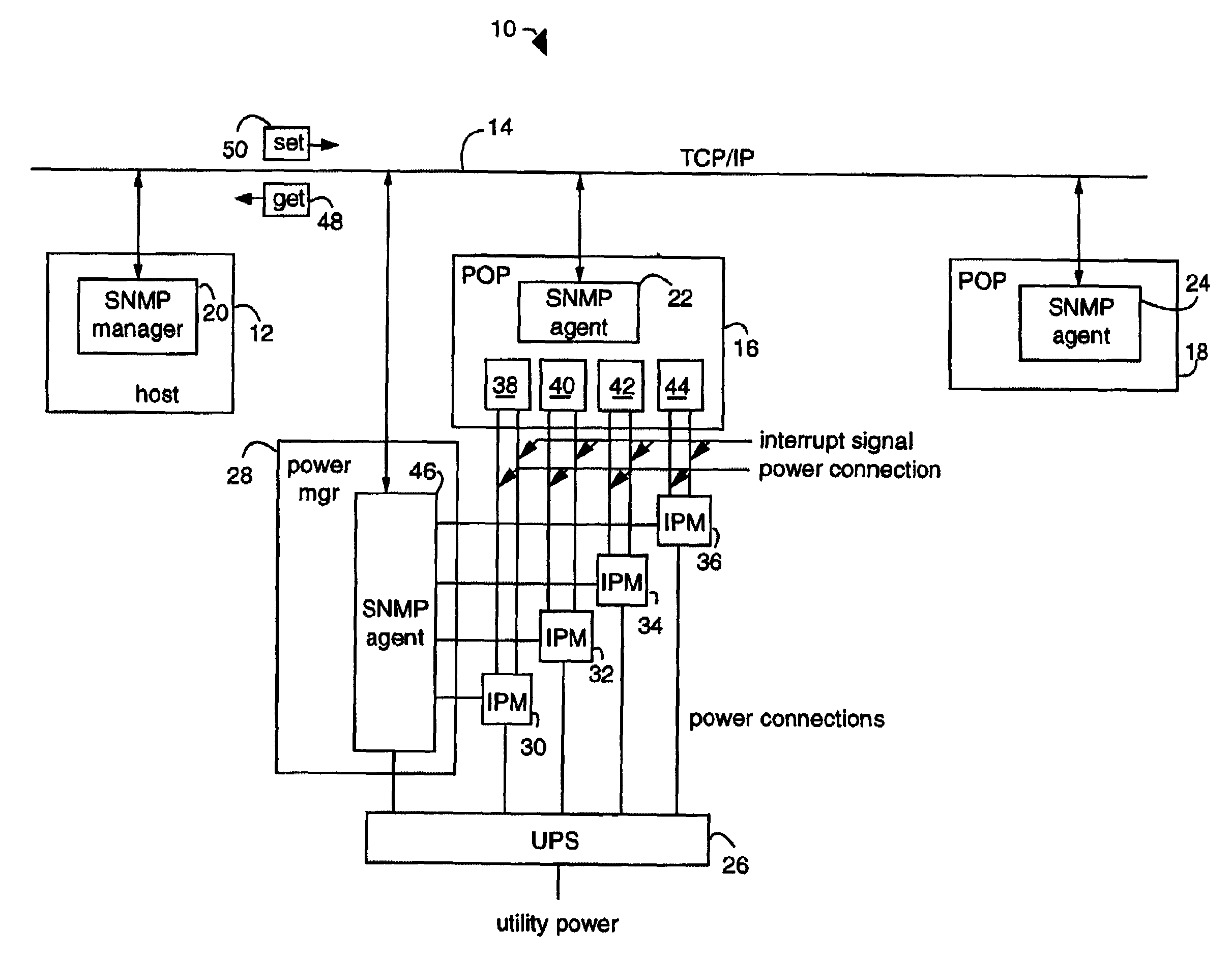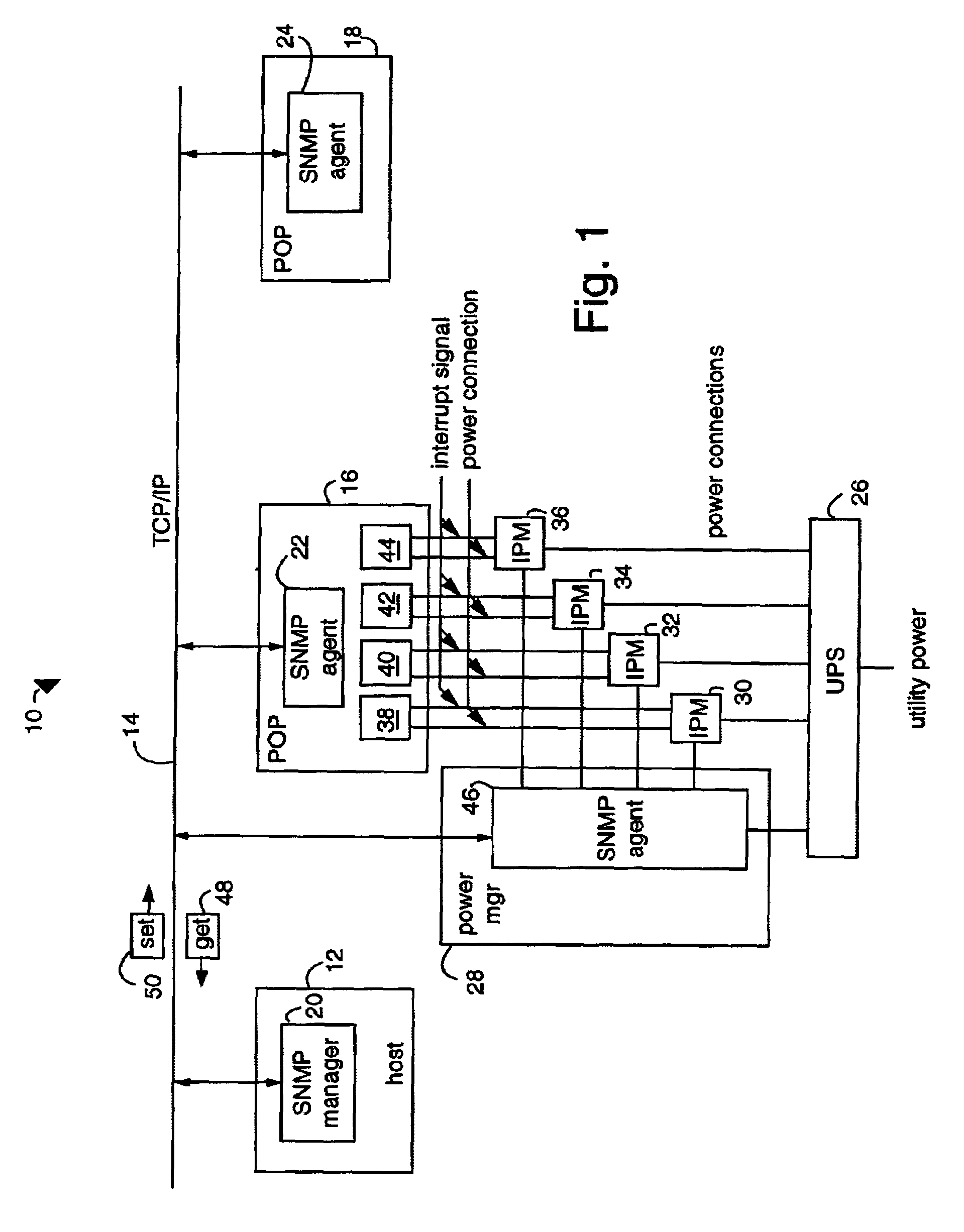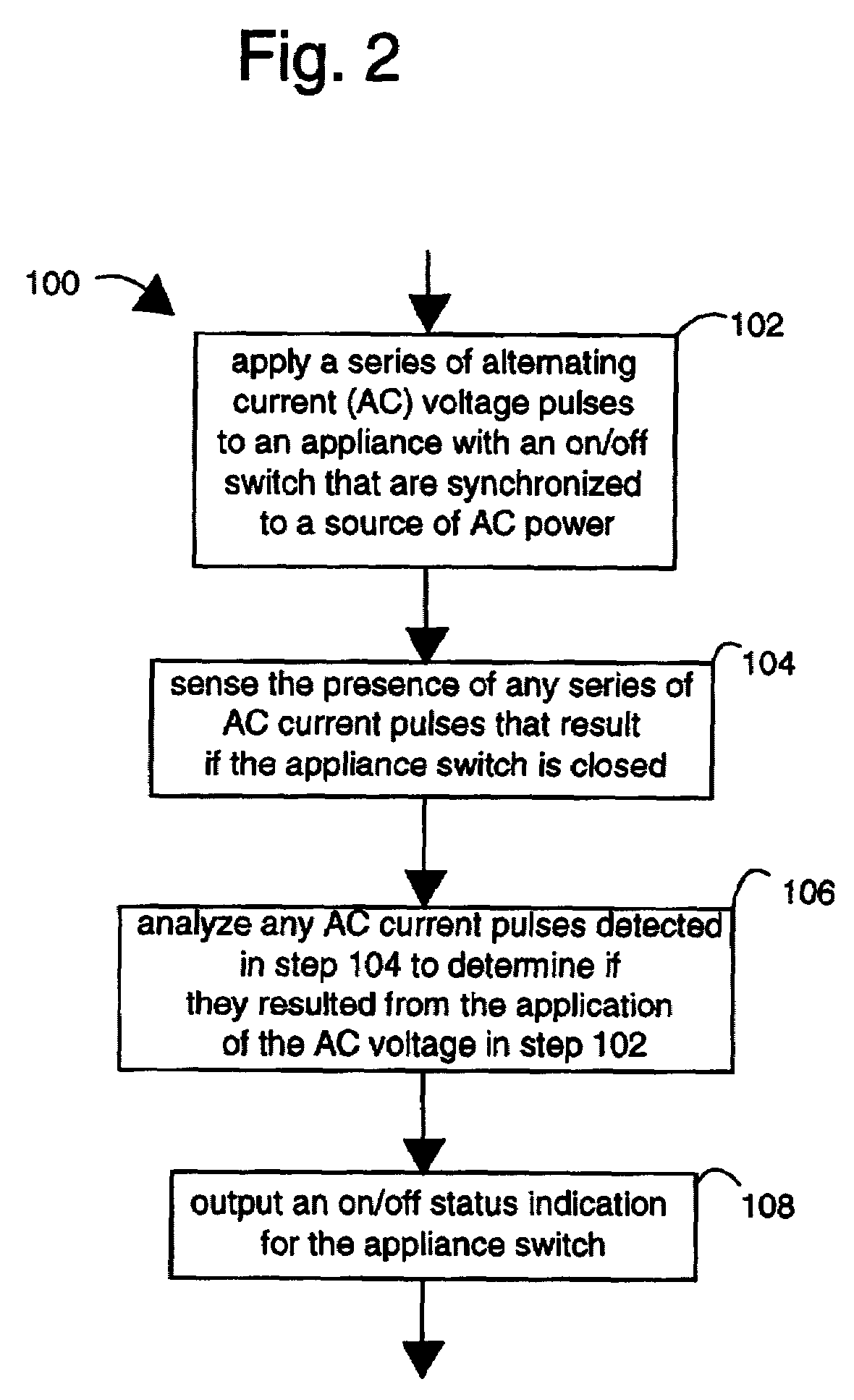Remote power control system
a remote control and power control technology, applied in computer control, data switching networks, instruments, etc., can solve the problems of not being particularly efficient, complicated to implement snmp, and high cost of dispatching third-party maintenance technicians, so as to reduce the time it takes to restore a failed network appliance, improve service level measures, and recapture the cost of implementing the present invention
- Summary
- Abstract
- Description
- Claims
- Application Information
AI Technical Summary
Benefits of technology
Problems solved by technology
Method used
Image
Examples
Embodiment Construction
[0035]FIG. 1 illustrates a simple network management protocol (SNMP) network embodiment of the present invention, referred to herein by the general reference numeral 10. The SNMP network 10 includes a host 12 with a TCP / IP connection 14 to a plurality of point-of-presence (POP) nodes represented by a pair of network equipment racks 16 and 18. SNMP network management is provided by a SNMP manager 20 in communication with a respective pair of SNMP agents 22 and 24 at the remote nodes. The SNMP manager 20 may comprise a commercial product such as IBM NETVIEW / 6000, HP OPENVIEW, POLYCENTER, SunNet MANAGER, Cabletron SPECTRUM, etc.
[0036]An uninterruptable power supply (UPS) 26 provides operating power to a TCP / IP-addressable enterprise power manager 28. It also powers a plurality of intelligent power modules (IPM's) 30, 32, 34, 36 that are able to switch the operating power on / off to a corresponding network appliances 38, 40, 42, 44.
[0037]An SNMP agent 46 is private to the power manager 2...
PUM
 Login to View More
Login to View More Abstract
Description
Claims
Application Information
 Login to View More
Login to View More - R&D
- Intellectual Property
- Life Sciences
- Materials
- Tech Scout
- Unparalleled Data Quality
- Higher Quality Content
- 60% Fewer Hallucinations
Browse by: Latest US Patents, China's latest patents, Technical Efficacy Thesaurus, Application Domain, Technology Topic, Popular Technical Reports.
© 2025 PatSnap. All rights reserved.Legal|Privacy policy|Modern Slavery Act Transparency Statement|Sitemap|About US| Contact US: help@patsnap.com



